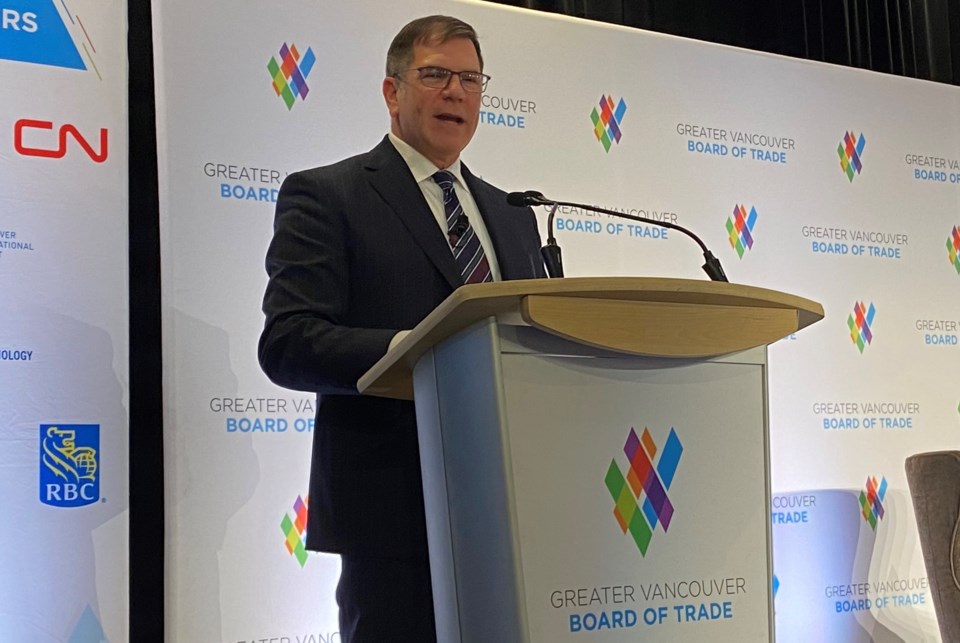Mining has never been viewed as exactly environmentally friendly.
Mines and miners have often been the target of NGOs for the impacts mining can have on water, land and Indigenous communities.
But because mining plays such an important role in the energy transition needed to address climate change, there is increasing support for mining by governments, First Nations and the general public.
The need for critical minerals to supply the energy transition poses a huge opportunity for B.C., said Michael Goehring, president of the Mining Association of BC (MABC).
The International Energy Agency (IEA) has estimated a sixfold increase in demand for critical minerals will be needed by 2040, largely to supply the energy transition. Of the 31 minerals on the federal government’s critical minerals list, 16 are found in B.C.
Copper is the most abundant critical mineral mined in B.C., but there are also proposals here for new nickel mines, and even a rare earth mine.
There are 17 critical mineral mines proposed for B.C., and a recent economic impact study on them found that, if all were built, their development and construction alone would generate an "eye-popping" $36 billion in near-term investment, Goehring said.
“That will result in a whopping economic output of $80 billion, labour income of $23 billion and $11 billion in tax revenues,” Goehring said.
The longer term impact of these mines, once in operation, could reach nearly $800 billion over the life of the mines, Goehring added.
Five proposed gold mines in B.C. would exceed $29 billion in economic activity over their lifespans.
But Goehring warned against complacency. Though support for critical minerals mining is generally growing, obstacles remain.
“Many countries are looking to Canada as a reliable and responsible producer of critical minerals, but we’re in a high stakes game with many competitors,” Goehring said.
“This is also taking place at a time when the pool of capital for mining is shrinking, fragmented and more risk averse than in years past. And you have to face the fact, too, the new mines are large, high-risk capital projects, and like it or not, today’s investors are seeking faster and more certain returns.
“So that means that, while we’re very well positioned to be at the forefront of this energy transition, and to be a leading global supplier of responsibly produced critical minerals, our time is limited to capitalize on this generational opportunity.”
Mining is already a major economic pillar in B.C. More than 1,100 exploration and mining companies are headed quartered in B.C.
There are 17 operating mines in the province – seven of them metallurgical coal mines -- two smelters, and two new gold mines going into production this year: Premier and Blackwater.
In 2022, mining generated $18 billion in economic activity, accounted for nearly one-third of B.C.’s total exports – 30 per cent – and employed 35,000 British Columbians, Goehring said.
Mineral exploration expenditures reached $644 million last year, Josie Osborne, minister of energy, Mines and Low Carbon Innovation, said in a press release in observation of Mining Month. And over the past five years, exploration spending totalled $2.8 billion, she said, with mining production valued at $60 billion.
“The year ahead promises to be marked by milestones, as we welcome two major mines starting or resuming operations: Premier Gold, near Stewart, and Blackwater Gold, southwest of Prince George,” Osbourne said.
Mining is the largest employer of aboriginal people in Canada, and in B.C. 45 First Nations share in the benefits of mining through participation or impact benefit agreements, and 49 have received $326 million in mineral tax payments, Goehring said.
Goehring said federal and provincial governments – both of which have adopted critical minerals strategies – have made strides in promoting mining. But more needs to be done, mainly on permitting.
“If we’re to fully unlock B.C.’s critical mineral potential, we need competitive fiscal and regulatory policies to attract and retain investment to grow our sector,” Goehring said.
Positive steps from the province include a First Nations equity financing plan that helps First Nations gain equity positions in resource projects. Goehring urged the government to provide more capacity funding for First Nations, since dealing with resource development projects takes a huge amount of resources, which many First Nations do not have.
“First Nations governing bodies require governance, administrative and technical capacity to enable them to be on a level playing field and participate in government-to-government processes and reviews of major mine projects on their terms,” Goehring said.
Goehring also said the industry needs to work on “perception” issues to attract more young people into mining.
But topping the list of urgent reforms is still permitting timelines. It simply takes too long to get new mines approved.
“Permitting is currently the major obstacle to critical minerals development,” Goehring said.




